One of the most beautiful sights in Osnabrück is the Roman Catholic Cathedral of St. Peter (also known as St. Peter’s). Even before you reach the impressive cathedral of the Osnabrück diocese, you can discover the Little Church, the Lion’s Poodle and the Witches’ Walk and the Osnabrück Wheel.
The Domplatz is a large open space from which you have a view of Osnabrück Cathedral. But before I went into the cathedral, I first went on a journey of discovery around the cathedral and discovered quite a few things.

The “Little Church” and the Witches’ Walk
To the north of the cathedral on the large Domfreiheit stands the former Jesuit College with the Small Church. The grammar school church is dedicated to St Paul. The Catholic church is separated from the cathedral by the Hexengang.
Bishop Eitel Friedrich von Hohenzollern founded the Jesuit College and in 1682 the foundation stone was laid for the chapel, which was used by the college in the following years.
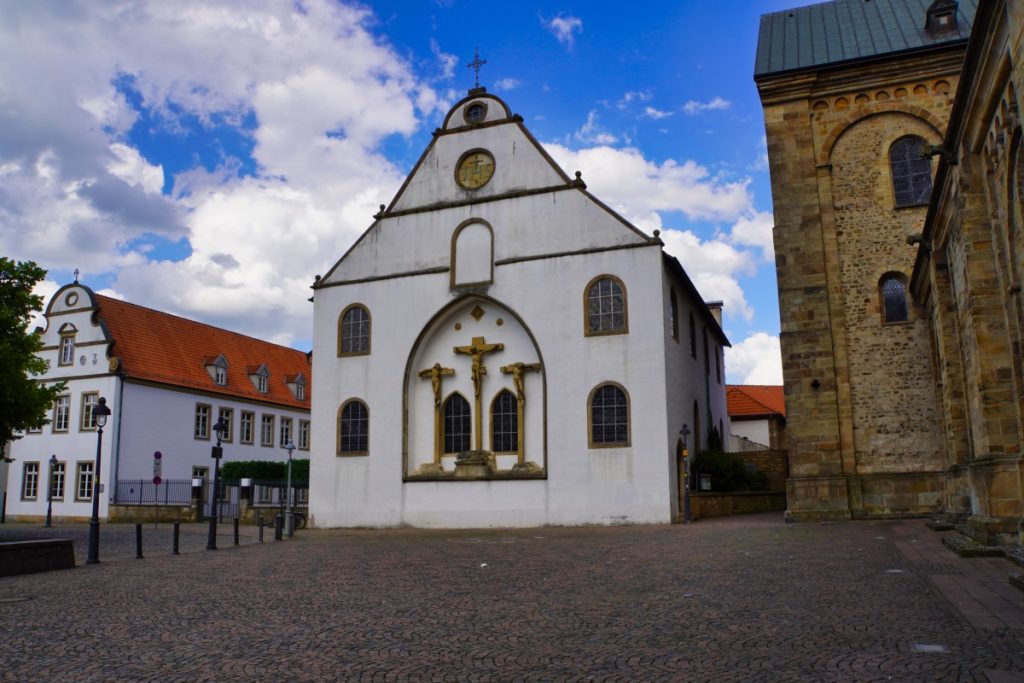
During the air raids on Osnabrück in the Second World War, the chapel was damaged and burnt out. From 1950-59 it was rebuilt according to the old model. Today, the western gable of the chapel contains the Calvary group (1520), which once stood in the former Augustinian monastery at Neumark.
The Hexengang (Witches’ Walk) or Klapperhagen separates the Small Church from the Cathedral. It runs from the Große Domfreiheit to the Conrad-Bäumer-Weg.
The name Klapperhagen goes back to the prohibition of visiting the cathedral for people suffering from plague or leprosy. In this aisle they could take part in the service, but had to warn arriving persons of their illness with a clapper or rattle.
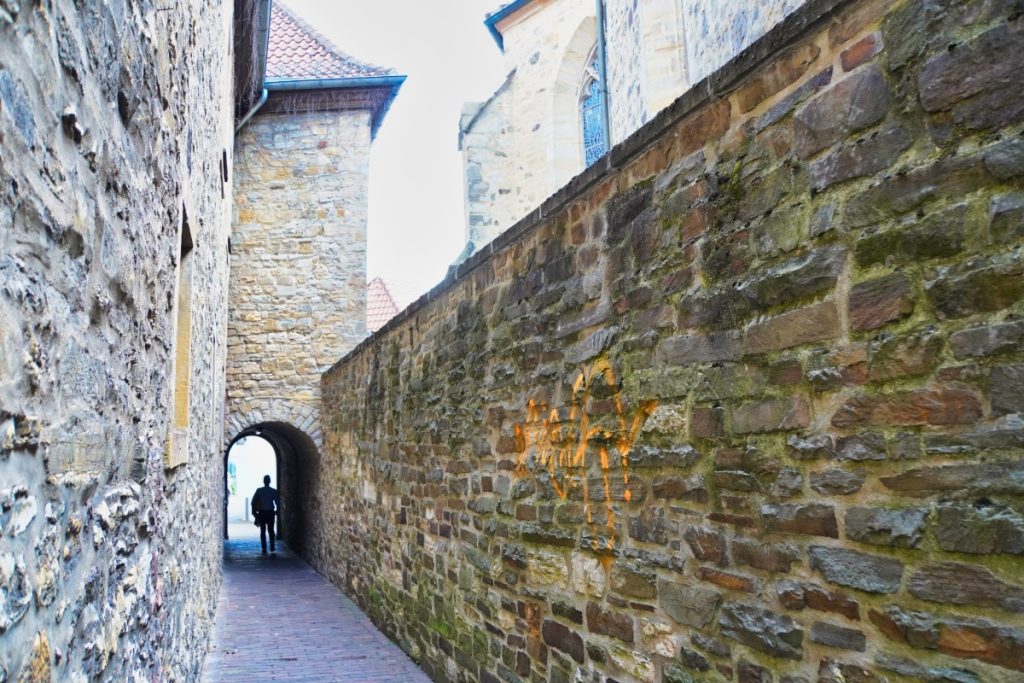
The narrow alley, bordered by high walls, was probably given the name Hexengang in the 19th century. It was long assumed that in the 16th and 17th centuries women who were thought to be witches were led from the Bucksturm through this passage to the river Hase in order to perform the water test there. Today we know that this assumption is wrong. The witch’s passage belongs to the area of the Catholic cathedral, but the witch hunt in Osnabrück was led by the Protestant magistrate.
The legend of the lion poodle (Löwenpudel)
In front of the cathedral, in the north-western corner on the Domplatz, there is a statue. This represents the Osnabrück “lion poodle”. But what is the story behind it?
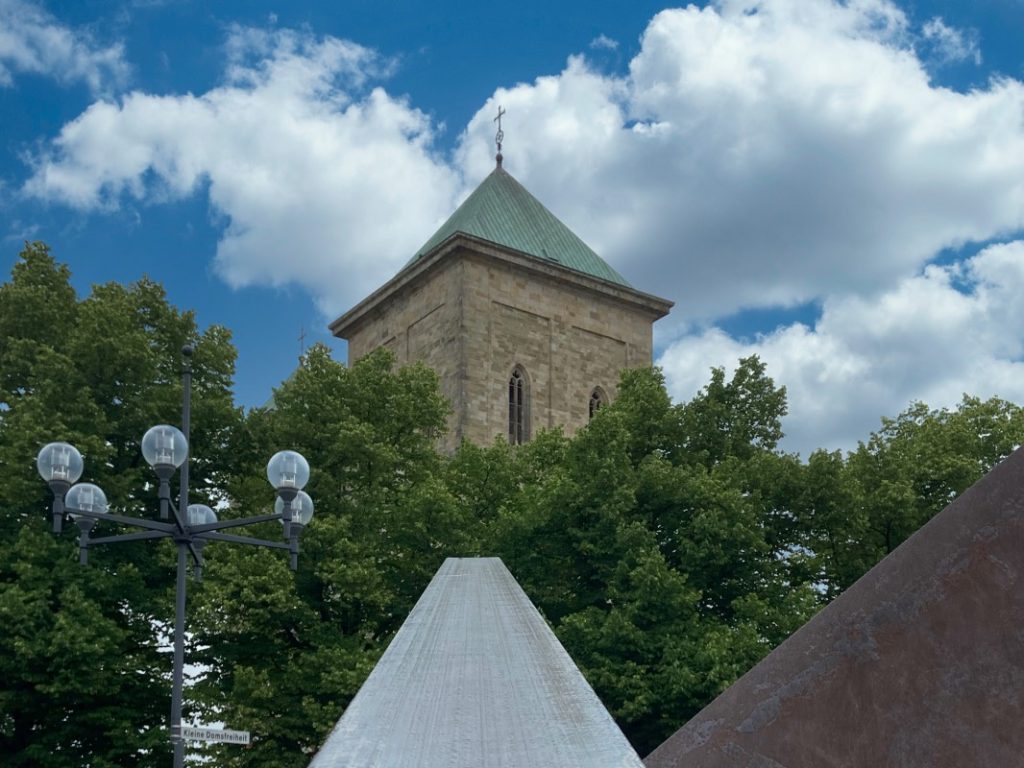
According to legend, the story of the lion poodle goes back to the time of Charlemagne. The latter was enraged when he learned that the citizens of Osnabrück had made contact with the pagan Saxon Wittekind in his absence. Charlemagne swore that he would punish this. The first living creature that would meet him when he next entered Osnabrück, he wanted to cut off its head.
Now Charlemagne came back to Osnabrück. His sister, who lived in the city and was married to a Christian Saxon, stood at the city gate waiting for him. She wanted to plead for mercy for the citizens of the city.
Karl recognised his sister and immediately realised that she would be the first to confront him. He begged heaven to release him from his oath. Then suddenly his sister’s favourite dog, a poodle, jumped out from behind his sister and ran up to Karl and licked his hand. Karl raised his sword, killed the dog and thus fulfilled the oath he had made.
The citizens of Osnabrück were relieved that it “only” hit a dog and not a human being. They had the dog’s image carved in stone and placed it on the cathedral square. They also gave him the name Lion Poodle.
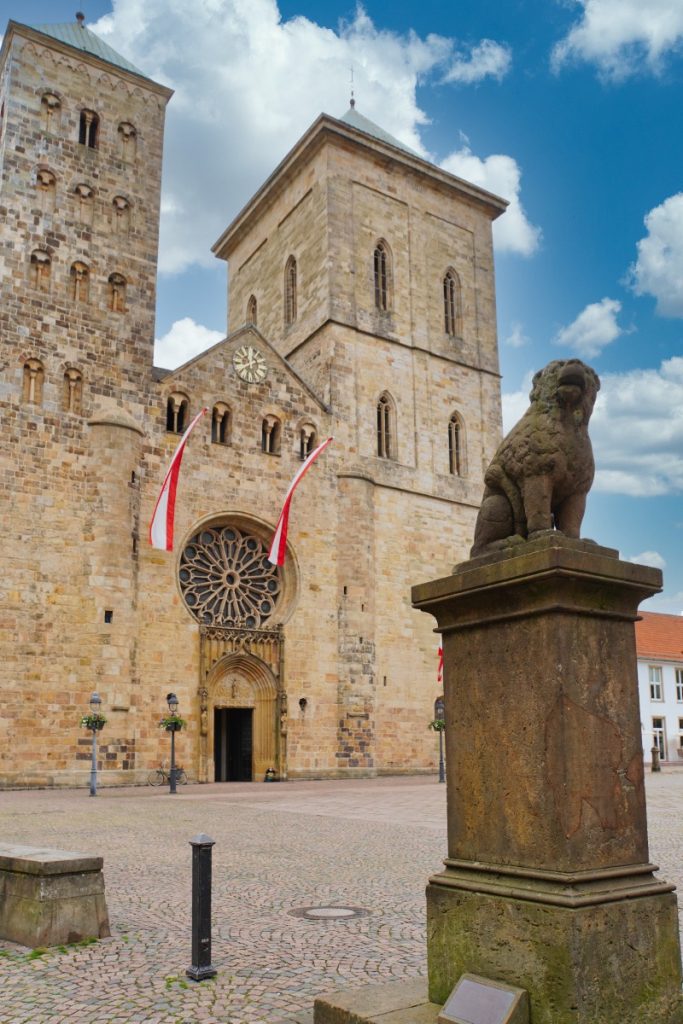
Whether this legend is true, it is doubtful. Poodles were not bred in Germany until the 19th century.
Today, it is rather assumed that the statue is a sign of jurisdiction. Osnabrück was granted jurisdiction by Duke Henry the Lion. If you look at the lion poodle, you will notice a certain similarity to the lion of Brunswick. The first documented mention of the statue is from 1331 as “Der steinerne Löwe oder Löwenstein”.
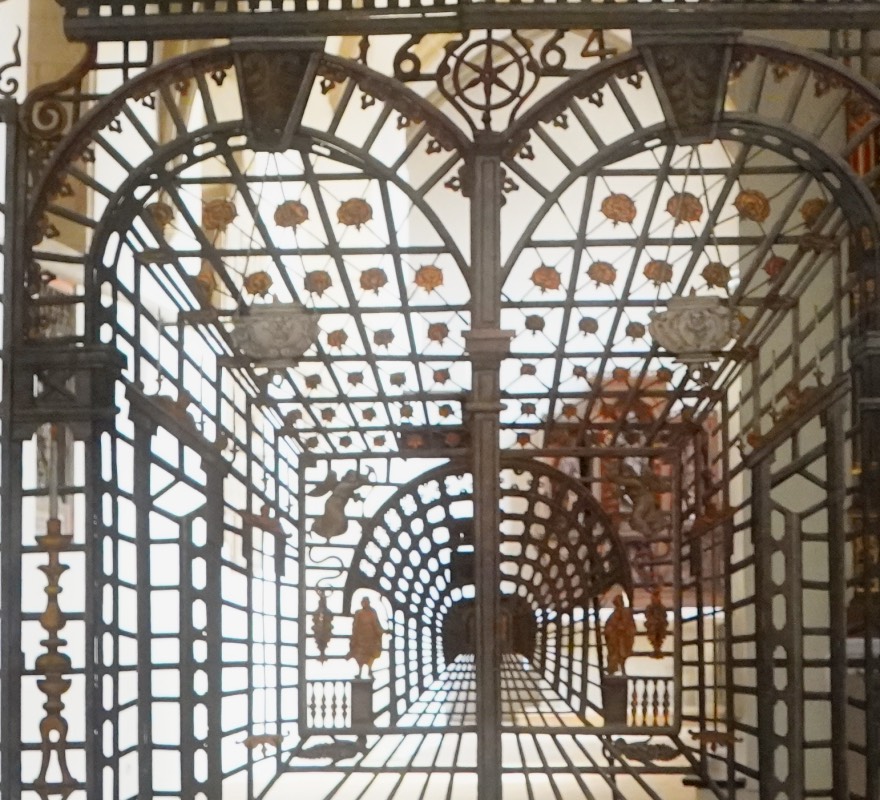
The Osnabrück Cathedral
The foundation of the bishopric in Osnabrück dates back to the time of Charlemagne. In 785, the first church was built where Osnabrück Cathedral stands today. The Normans destroyed it in 890, after which it was rebuilt section by section to its present size. Over many years, the church was rebuilt, extended with various annexes and any damage repaired. For example, the rectangular choir was built around 1270, the large rose window in the west façade in 1305 and 1350, and the ambulatory and the Lady Chapel around 1434/44.
Around 1509, one of the two church towers, which had been the same height until then, was replaced by a larger Gothic tower with a pointed pyramid roof. After the Second World War, when the cathedral roof and church annexes were destroyed by incendiary bombs, the towers were given flatter pyramid roofs to emphasise the Romanesque exterior of the church. The Osnabrück wheel that fell from the south tower now stands at the side of the cathedral.
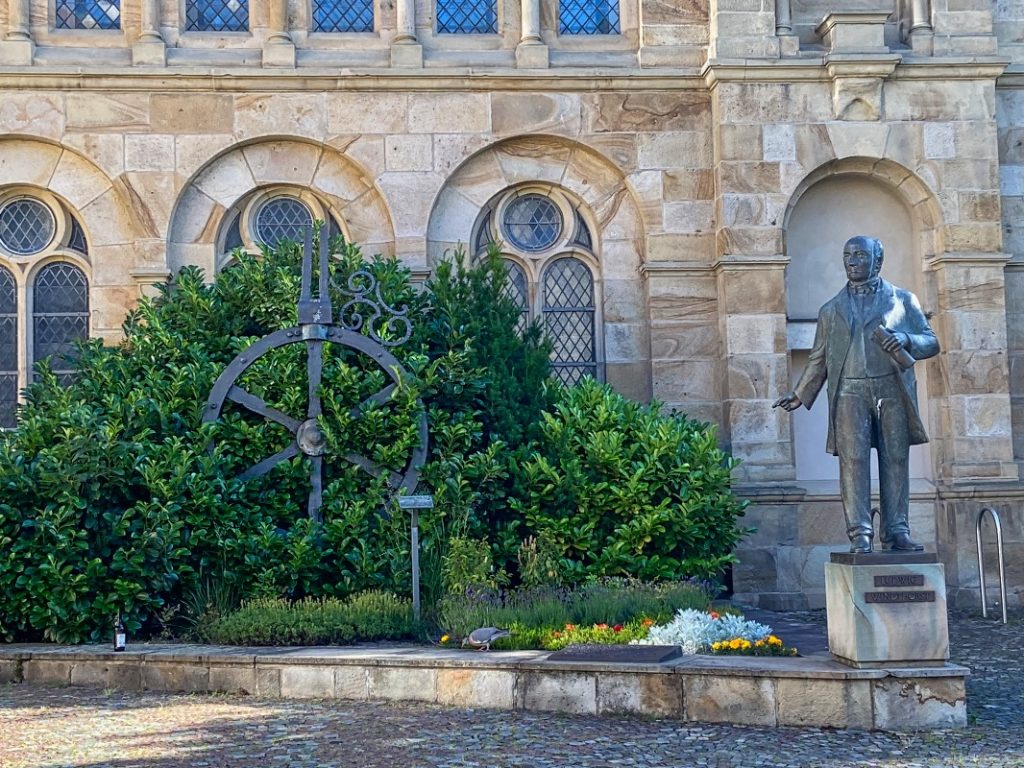
A visit to the cathedral is impressive. When you enter the high nave, you immediately notice the beautiful three-winged high altar from 1894-1905, which was created by the Osnabrück sculptor Heinrich Seling (1843-1912).
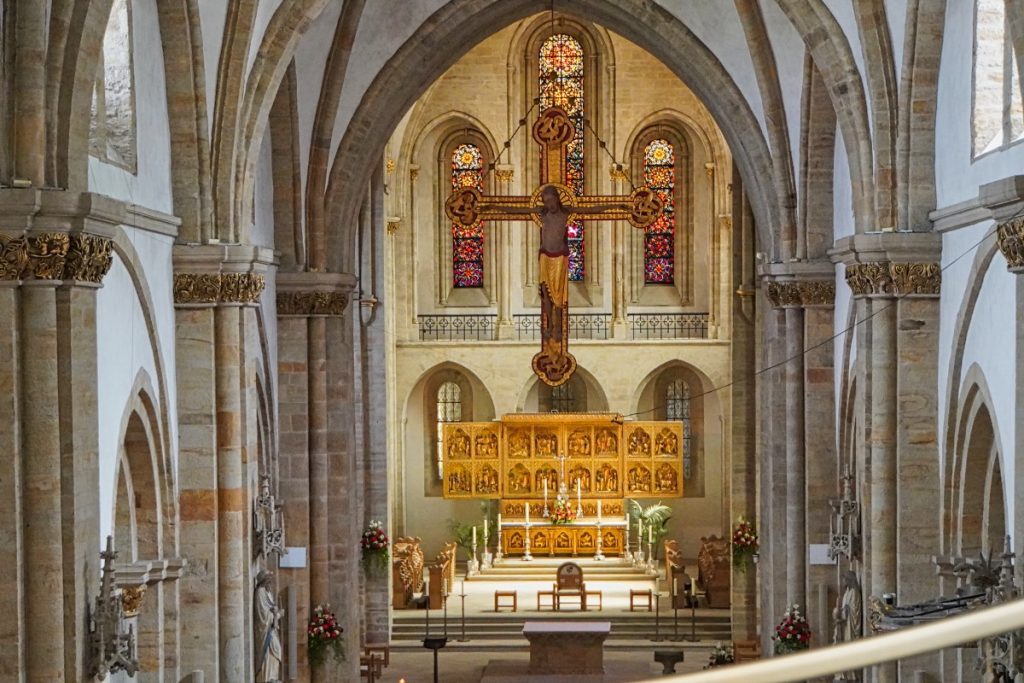
High above the nave and the altar area hangs the Triumphal Cross. This dates from around 1230 and is one of the oldest objects in Osnabrück Cathedral. Viewed from below, the cross appears huge. The head of the figure is made of oak and contains the relics of St Crispin, Crispinian and St Regina. I am very impressed by the cross and I can imagine that it is beautifully illuminated in the “right” incidence of light.
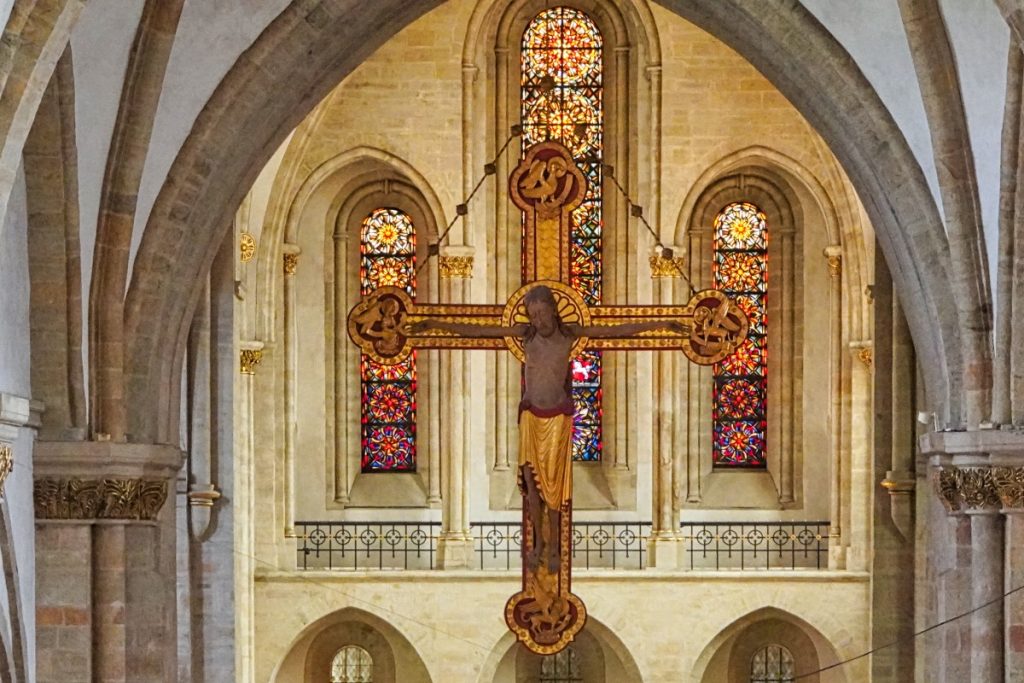
If you walk through the central nave, you will notice the beautiful pulpit. It is designed in the rococo style and dates from 1752. The artist Johann Andres Vogel from Paderborn used reddish coloured artificial marble for it. The pulpit is decorated with bas-reliefs depicting the calling of the apostle Peter.
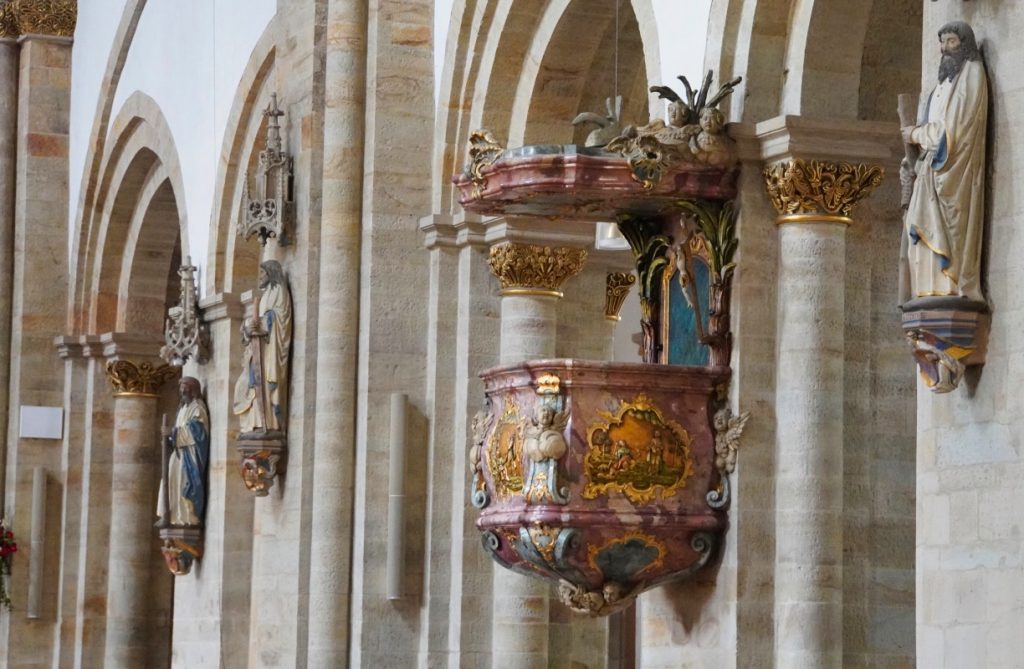
Once you have arrived at the altar, it is worth taking a look back at the cathedral entrance. The organ loft above the entrance carries the main organ, which was built in Switzerland in 2003. For the installation of the organ, which is larger than its predecessor, the old organ gallery was torn down and a new one built. This was the only way to avoid covering the impressive colourful rosette. The current glazing was installed after the Second World War and the light falls beautifully into the nave.
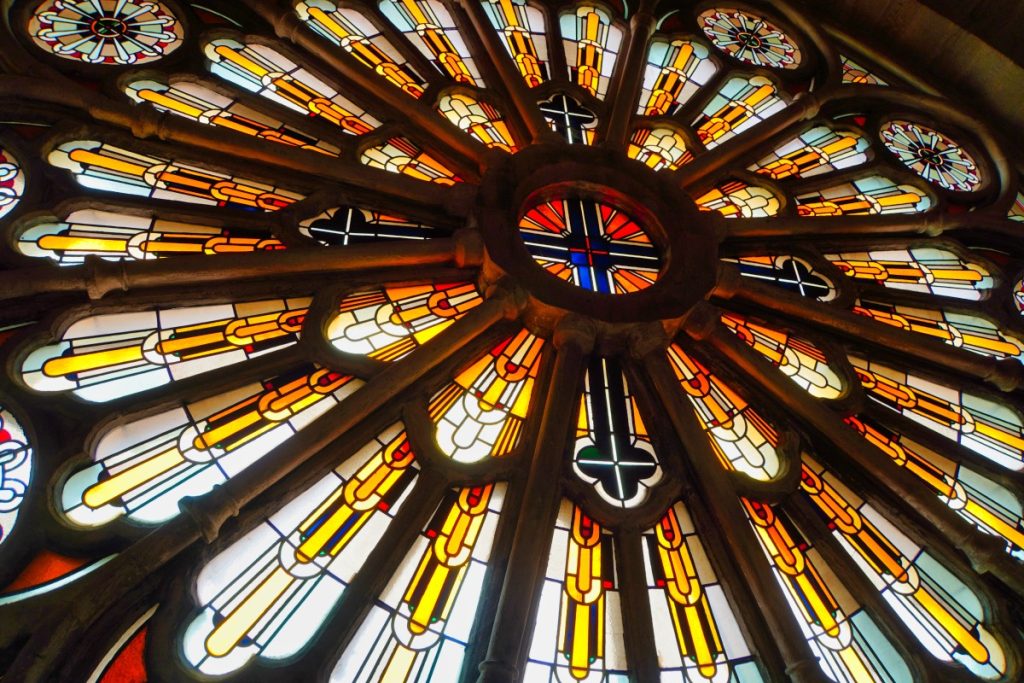
You should not miss the tour of the cloister in Osnabrück Cathedral. As soon as you step through the door into the aisle with the open pillared arcades, you arrive in a completely different atmosphere. Time seems to stand still here and it is quiet and restful. In the small garden area in the middle of the cloister are the tombs of the bishops of the diocese.
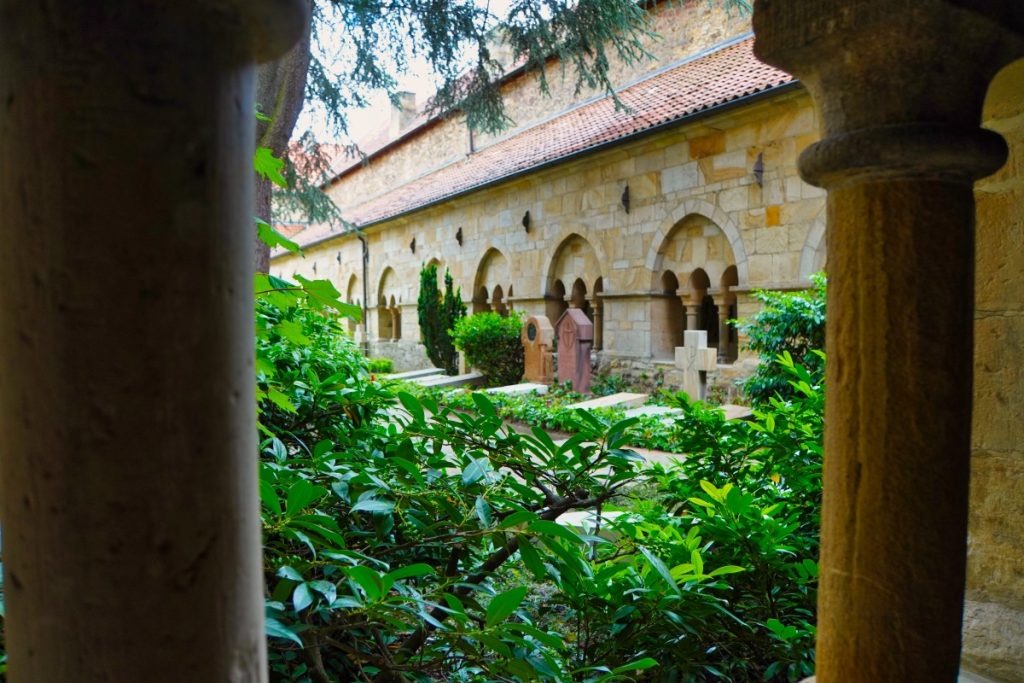
Opening hours:
Monday-Friday: 9 – 19h
Saturday: 9 – 16h
Sunday: 13-18h



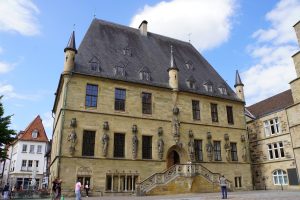


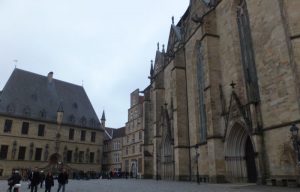

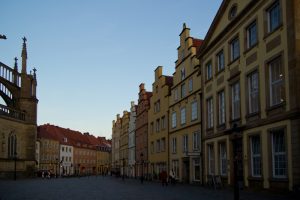
Leave a Reply